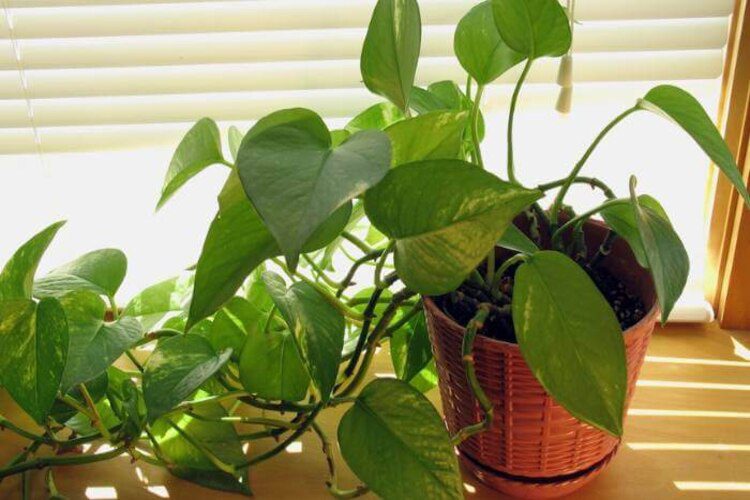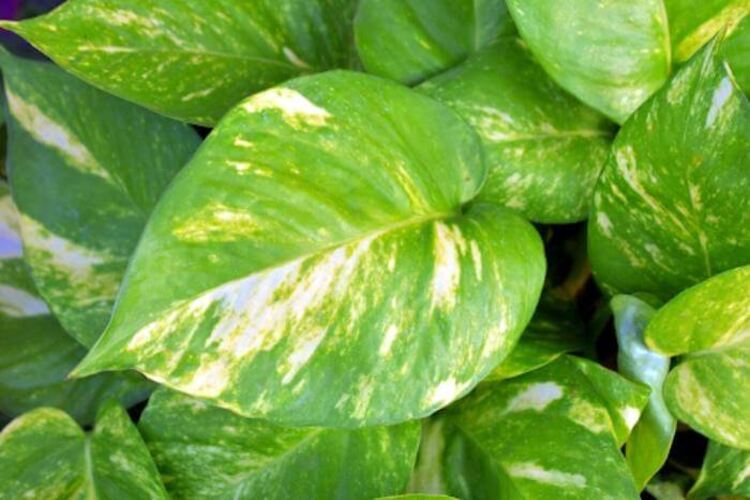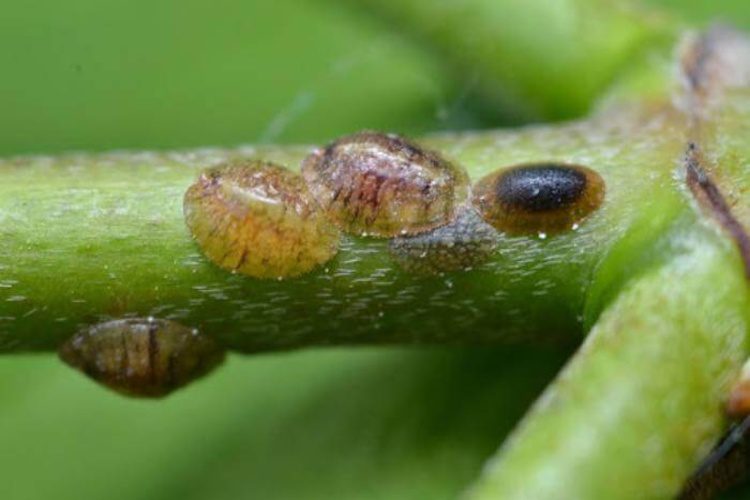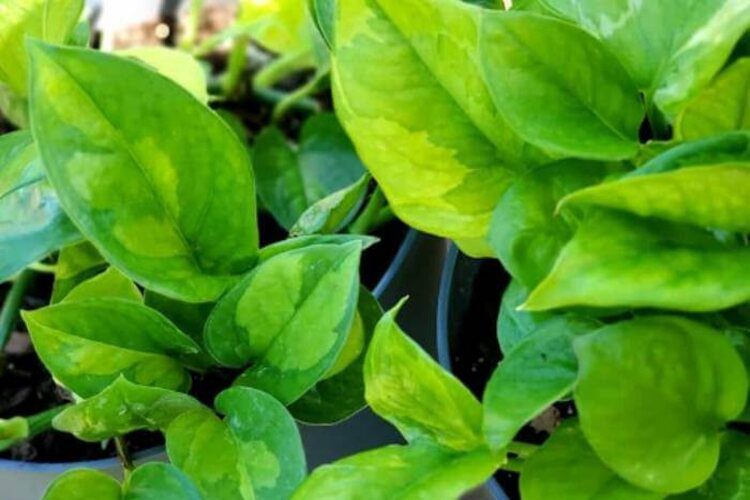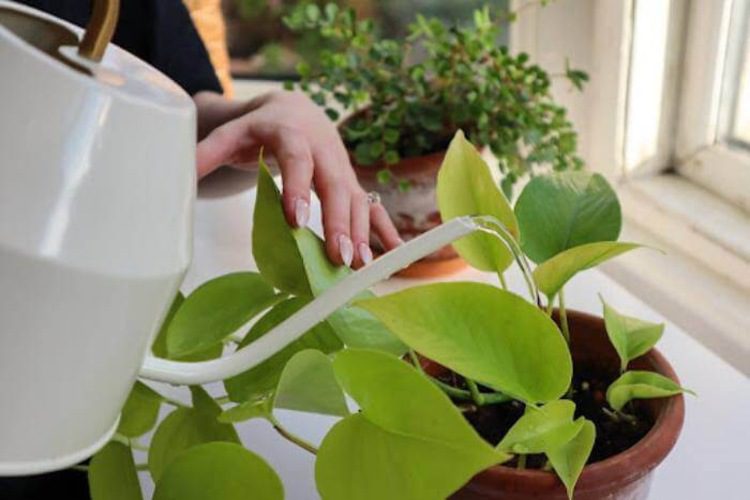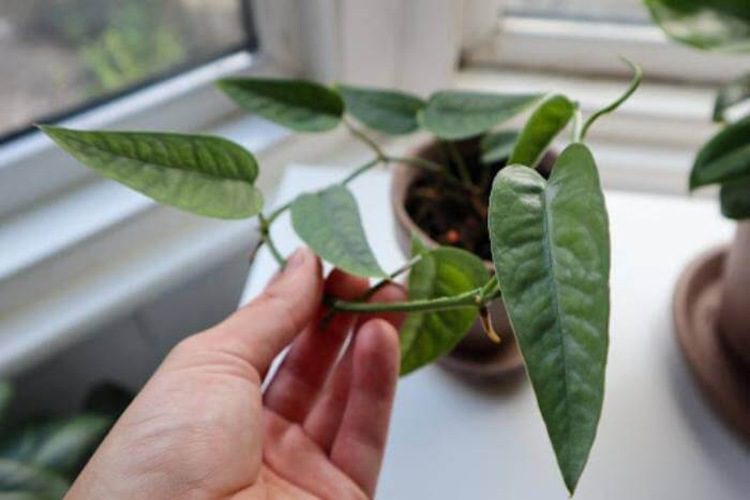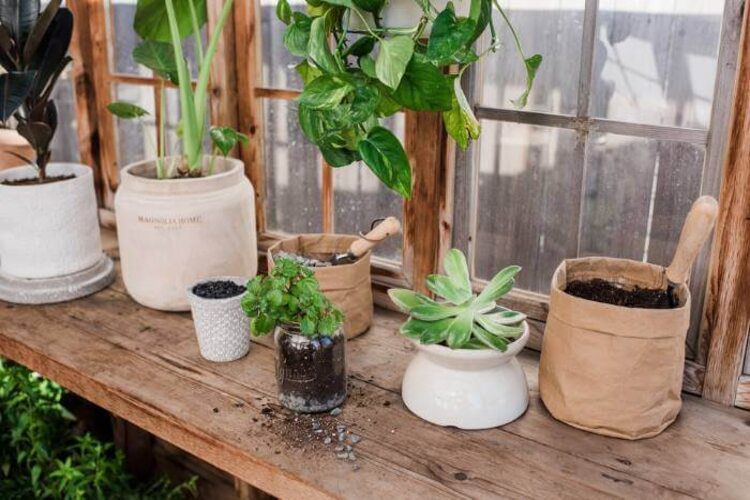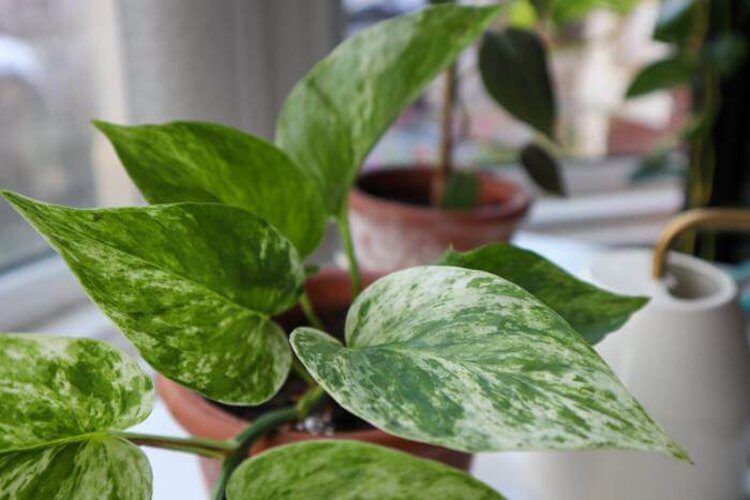N’Joy Pothos Care: Tips To Care & Grow
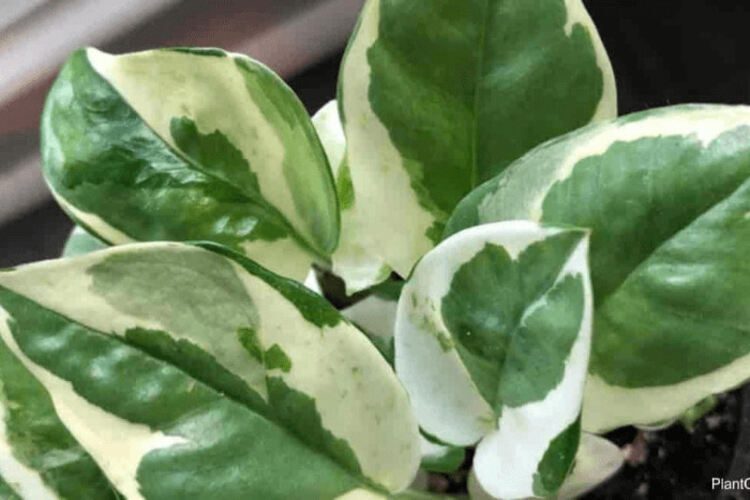
This plant is a great choice for those who want to add some greenery and color to their home but don’t have the space. These plants grow well in containers because they’re accustomed to living in an understory with high humidity levels and warm temperatures, making them the best green candidates for growing indoors.
| Scientific Name | Epipremnum aureum ‘Njoy’ |
| Common Name | Njoy Pothos |
| Family | Araceae |
| Origin | South Pacific Islands |
| Plant Type | Perennial, vine |
| Bloom Time | There are no flowers when grown indoors |
| Mature Size | 10-foot vine |
| Soil | Quick-draining/ PH 6.1 to 6.5 (mildly acidic) |
| Water | Weekly, water if the top half of the soil is dry |
| Temperature | 60 to 80ºF (18 to 30ºC) |
| Sunlight | Bright indirect sunlight |
| Toxicity | Toxic to humans and pets |
About N’Joy Pothos
N’ Joy Pothos is the perfect choice for those who want to have a stunning and hardy potted plant. It’s very easy to care for, making this little guy an excellent addition to any home or office!
These plants grow so prolifically in the right climates that they are classified as invasive. The plant’s invasive nature has given it another common name, “Devil’s Ivy.” You may also see this labelled as the Money Plant in some regions due to its geomancy. The cultivar’s variegated leaf pattern makes it stand out from other Pothos types. It has smaller, ruffled leaves with large patches of cream and white on a light green background that give this plant an autumnal feel in your garden.
People often mistake N’Joy Pothos for Pearls and Jade Pothos because they have similar leaf variegation patterns. However, there are a few key differences that can help you identify them. N’Joy Pothos has smaller, more ruffled leaves with larger patches of white and cream. Pearls and Jade Pothos have larger, smoother leaves with smaller speckles of white and cream. Additionally, N’Joy Pothos is a hybrid of Manjula Pothos and Golden Pothos, while Pearls and Jade Pothos is a cultivar of Epipremnum aureum.
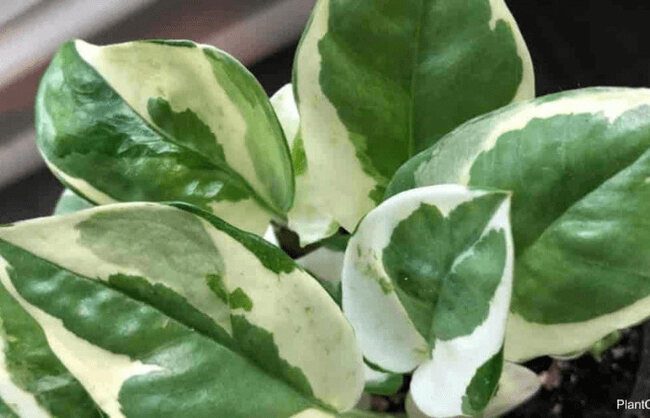
N’Joy Pothos Care
Pothos plants are one of the easiest plants to care for. They’re so easy that many people consider them a “starter plant”—perfect for those who are new to gardening.
Here are some tips for keeping your pants healthy and looking great:
Light
There is one factor you need to keep in mind when caring for your pothos plants: the amount of light they receive. N’Joy needs indirect light to thrive. If they do not receive enough light, their leaves will start to turn yellow, and they will become leggy and weak. But if they receive too much direct sunlight, their leaves will scorch and turn brown.
So how can you tell if your pothos plant is getting the right amount of light? The best way is to monitor the leaves. If they are a healthy green, then your plant is getting enough light. In general, N’joy pothos do well in any room that has warm, indirect light. But if you’re not sure where to put your plant, a north- or east-facing window is a good option.
Soil
N’Joy prefers soil that is light and well-draining. A pot with drainage holes and a potting mix designed for succulents or cacti would be a good combination. You can also add some perlite or vermiculite to improve drainage. The soil should be moist but not soggy, as pothos are susceptible to root rot.
Be sure to water your pothos regularly and fertilize them every few weeks during the growing season. This pothos is not particularly fussy about soil pH but prefers slightly acidic conditions. If your tap water is alkaline, you may want to use bottled water or rainwater for watering. You can also add some peat moss to the potting mix to lower the pH.
Watering
A good rule of thumb is to keep the potting mix moist and not let the plant dry out. It’s best to water the plant deeply once or twice a week, allowing the potting mix to dry out somewhat in between watering sessions. If you water the plant too much, you’ll drown it, which can cause root rot.
Examine the leaves to ensure that your pothos are not sitting in water. If they start to droop or turn yellow, that means the plant is thirsty and needs more water. On the other hand, if leaves are wilting or turning brown, that’s a sign that you have watered them too much.
Fertilizer
N’Joy plants are easy to grow but need some fertilizer to stay healthy. Too little fertilizer and the plant will be stunted in its growth; too much, and the leaves will turn yellow and fall off. A balanced diet of Nitrogen (N), Phosphorus (P), and Potassium (K) is best. These can be found in both organic and chemical fertilizers.
When choosing a fertilizer, make sure to pick one specifically made for pothos plants or houseplants in general. Do not use fertilizer for outdoor plants, as this can damage your pothos. Also, be sure to follow the directions on the fertilizer package, as too much fertilizer can burn the roots of your plant.
Temperature
It is important to keep in mind the temperature factor in pothos care, as cooler temperatures will be more favorable than warmer ones. Pothos plants can survive in a wide range of temperatures but will thrive and grow more quickly when the temperature is cooler.
For this reason, it is best to keep your pothos plant in a room with cool temperatures, such as a basement or an air-conditioned room. If you live in a particularly hot climate, you may want to consider keeping your pothos plant in a pot so that you can move it indoors when the temperatures become too high.
Humidity
Many people believe that the humidity factor is important in caring for pothos. This plant does well in moist environments, but too much humidity can cause it to rot. It’s best to mist the leaves regularly and place the pot on a pebble tray to increase the humidity around it. Keep an eye on the leaves and rotate them, so they all get an equal amount of moisture.
Repotting
To keep your pothos looking their best, you need to know about repotting. It ensures that your plants have enough space to grow. If you don’t repot your pothos regularly, the roots will start to crowd the pot, and the plant will become stressed. This can lead to yellowing leaves and poor growth.
So how often should you repot your pothos? It depends on the size of the pot and the plant. A general rule of thumb is to repot every two to three years. But if you notice that your pothos are starting to look crowded, it’s time to repot sooner rather than later.
N’Joy Pothos Propagation
To multiply the number of your pothos plants, you should know how to propagate the plants you already own! This simple method can be used with both cuttings and divisions:
- Cuttings: To propagate pothos from cuttings, start by filling a pot or container with moistened potting mix. Next, take a cutting from the mother plant that is about 4-6 inches long. Be sure to use a sharp knife or shears so that you get a clean cut. Cut just below a leaf node (the place where a leaf meets the stem). Remove the bottom leaves from the cutting, leaving just 2 or 3 at the top. Dip the cut end of the stem into rooting hormone powder or gel, then plant it in the potting mix. Firm the mix around the base of the cut. Place the pot in a bright, indirect sunlight location and keep the soil moist but not soggy. In 2-4 weeks, you should see new growth starting to appear.
- Divisions: To propagate pothos from divisions, start by carefully removing the plant from its container. Gently untangle the roots, being careful not to damage them. Using a sharp knife or shears, divide the root ball into 2-3 sections. Replant each section in its pot filled with moistened potting mix. Water well and place in a bright indirect sunlight location. Keep the soil moist but not soggy. New growth should start to appear in the next 2–4 weeks. Once the plants are established, you can transplant them into larger pots or your garden.
Toxicity
The N’Joy plant and its Epipremnum aureum (Manjula, Hawaiian Pothos, etc.) are toxic living beings, which means that they’re dangerous for humans and most household pets. The toxicity of this plant is explained by the calcium oxalate crystals that are found in all parts. Accidentally swallowing a leaf or stem might not be fatal, but it can cause painful and potentially serious symptoms.
If your child has eaten some of its parts and starts feeling itchy around the mouth, clean it thoroughly with a cool, damp cloth. If you notice that their tongue has become swollen or they are having difficulty breathing, then this could be a sign of a more serious illness, and you will have to take them straight to the emergency room. Those with sensitive skin should take precautions when exposed to the sap. It can irritate.
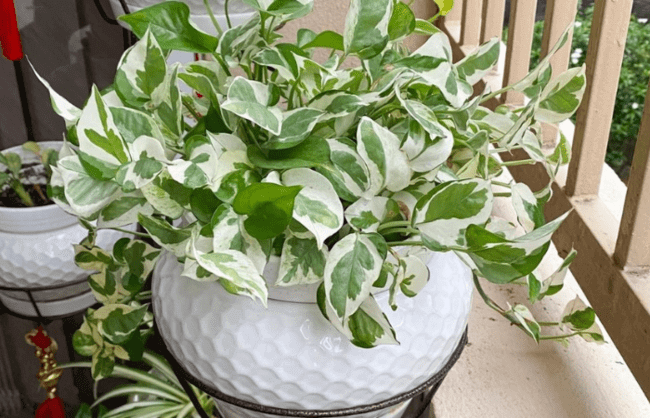
Common Problems
As a hybrid, N’Joy Pothos shares some of the same problems as Manjula Pothos. These are some of the common issues you should be aware of:
Yellow leaves
One common problem with this plant is the appearance of yellowing leaves. This can be caused by several factors, such as poor light, overwatering, or a lack of nutrients. If you notice the leaves turning yellow, you can do a few things to try to fix the problem.
First, take a look at the light conditions where the plant is growing. If it is in a very dark room, try moving it to a brighter location. If it is in a spot that gets direct sunlight, try moving it to a location with indirect light. Next, check your watering schedule. Overwatering is one of the most common causes of this problem. Allow the top inch or so of soil to dry out before the next turn. If you are still having problems, try using a moisture meter to help you keep track of the soil moisture levels.
Brown leaves
One common reason for brown leaves on these plants is improper watering. If the plant is too dry, the leaves will begin to turn brown and drop off. Conversely, if the plant is too wet, the roots will rot, and the browning leaves will fall off. The best way to water is to allow the top inch of soil to dry out before watering again. If you are unsure whether or not the plant needs water, stick your finger in the soil. If it feels dry to the touch, then it is time to water.
Another common cause of brown leaves is too much or too little sunlight. If the plant is in direct sunlight for too long, the leaves will begin to scorch and brown. On the other hand, if the plant does not get enough sunlight, it will become etiolated or stretchy.
Care Tips
Here are a few tips to help you get the most out of your N’Joy:
- They do well in both low and high light conditions, so you can place them in a variety of locations in your home.
- They don’t require a lot of water, so you can forget about them for a few weeks, and it will be just fine.
- If your pothos start to look a little bit scraggly, cut off the lower leaves to promote new growth.
- Those indoor plants are very resilient, so don’t be afraid to experiment with different watering schedules and fertilizer levels.
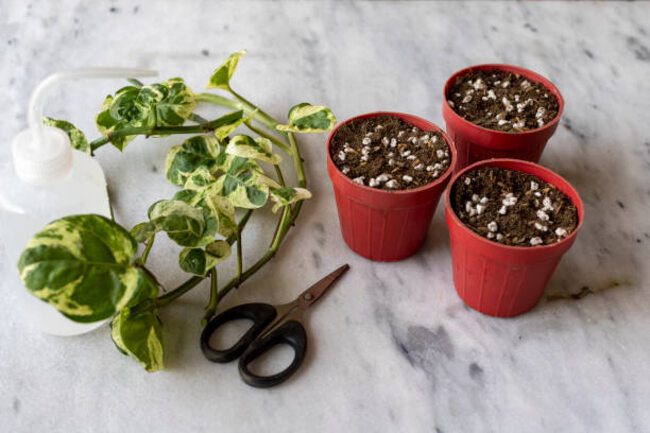
Conclusion
This special houseplant is perfect if you’re looking for an easy-to-grow plant with some flair. These compact plants can be found in smaller spaces, like bathrooms, and on top of your refrigerators! They also tend not to cost much more than other cultivars, which makes them great as your first plant on the list of collectables.
FAQs
Related posts:


